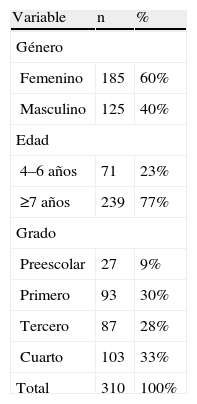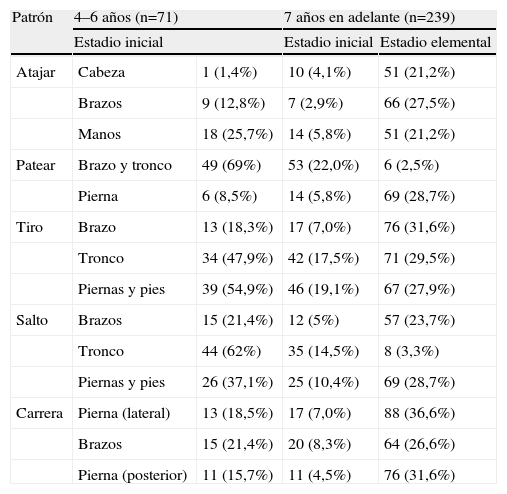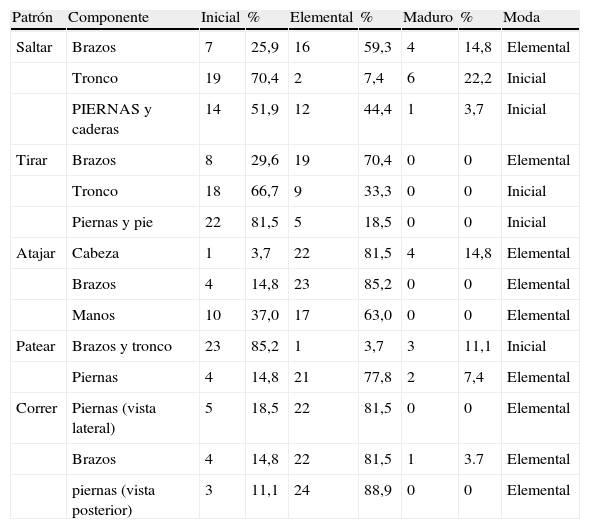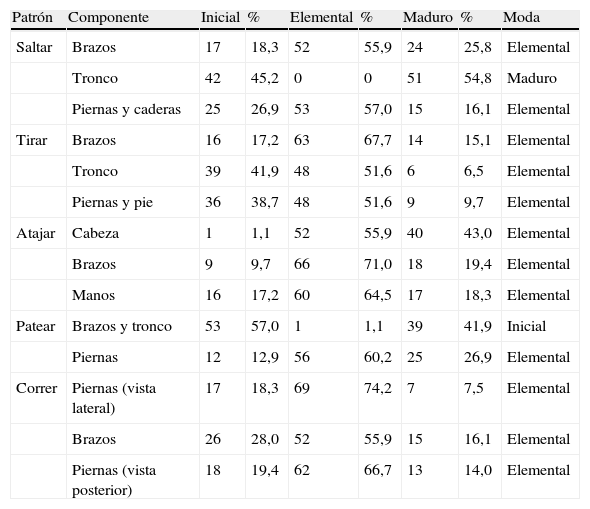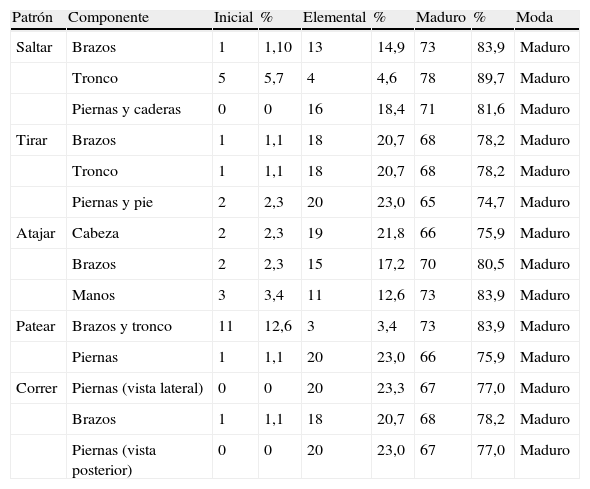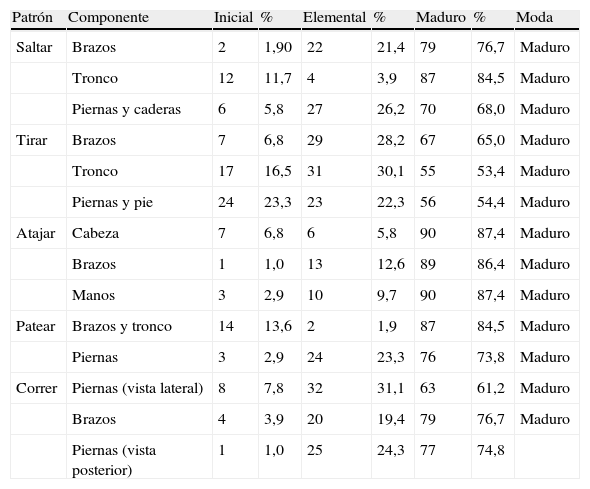Determinar el estadio de los patrones motores fundamentales en los estudiantes de los grados de preescolar, primero, tercero y cuarto de una escuela regular adscrita a la Alcaldía Mayor de Cartagena, Colombia.
Material y métodoEstudio descriptivo; se realizó observación directa de un total de 310 estudiantes aplicando el «formato de evaluación de los patrones de movimientos fundamentales» de McClenaghan y Gallahue (1985). La evaluación final se obtuvo del análisis de los resultados tanto de las observaciones como de las imágenes fotográficas obtenidas de la observación formal.
ResultadosLos resultados mostraron que los niños y niñas entre las edades de 4–6 años presentan retraso en algunos componentes de mano (25,7%), brazo y tronco (69%), piernas (54,9%) y tronco (62%) encontrándose así en el estadio inicial de los patrones de atajar, patear, tirar y saltar respectivamente.
En relación con los estudiantes de 7 años en adelante, grupo donde se esperaba que los patrones fundamentales de movimiento estuviesen en el estadio maduro, se encontraron 14 estudiantes (5,8%) en el estadio inicial y 51 estudiantes (21,2%) en el estadio elemental.
ConclusionesLos hallazgos sugieren que los estadios inicial y elemental de los patrones motores fundamentales pueden estar presentes en niños mayores de 7 años.
To determine the status of the basic motor patterns of students in grades kindergarten, first, third and fourth in the city of Tunja School. Such educational institution is part of Cartagena's municipal district.
Materials and MethodsA descriptive study, which was carried out from direct observation of a total of 310 students using the “Format for the Evaluation of Fundamental Movement Patterns” by McClenaghan and Gallahue (1985). The final evaluation was developed from the analysis of the results from both: direct visual observations, and from the images obtained.
ResultsThe results showed that children ages 4 to 6 years exhibited delays in certain motor components: hand (25.7%), arm and trunk (69%), legs (54.9%) and trunk (62%) and find themselves at an initial stage of addressing the following patterns: grabbing, kicking, throwing and jumping respectively.
As far as students 7 years and above; a group in which we would expect that basic patterns of movement are in a mature stage, they found 14 students (5.8%) in the initial stage and 51 students (21.2%) in elementary stage in the hand of the grab pattern components.
ConclusionsThe findings suggest that the initial and elementary stages of the motor movement patterns may be present in children older than seven of ages.
Artículo
Si ya tiene sus datos de acceso, clique aquí.
Si olvidó su clave de acceso puede recuperarla clicando aquí y seleccionando la opción "He olvidado mi contraseña".Comprando el artículo el PDF del mismo podrá ser descargado
Precio 19,34 €
Comprar ahora






